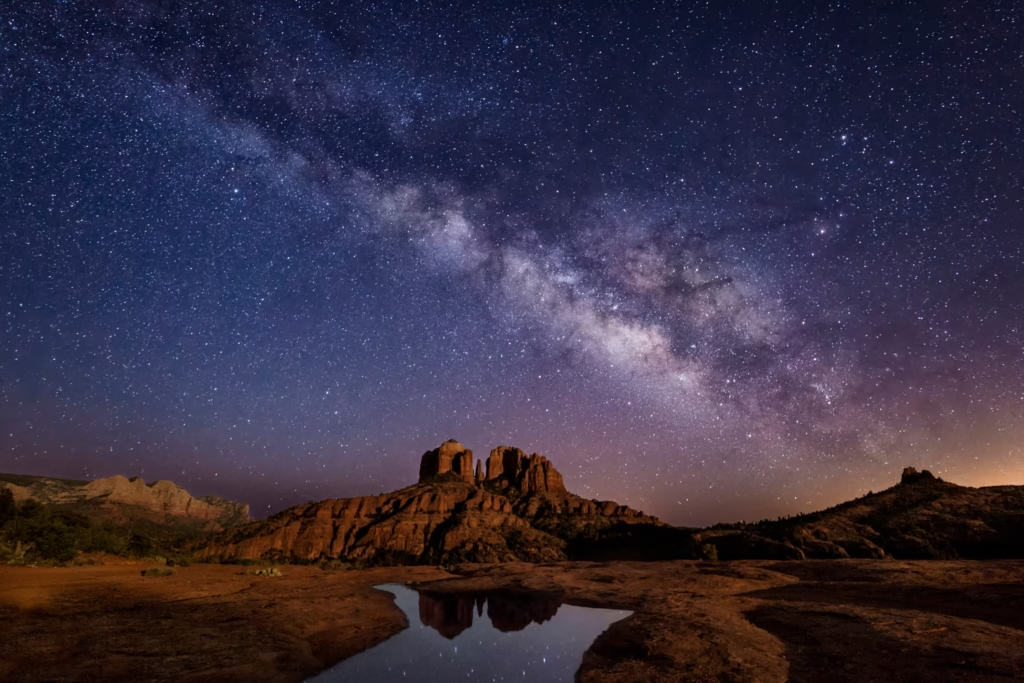Best Stargazing Destinations for Nature Lovers
Discover the best stargazing destinations for nature lovers. Explore dark skies, cosmic landscapes, and remote sanctuaries where stars come alive.

Why Stargazing in Nature Feels So Sacred
Long before cities glowed with electric light, humans looked to the night sky for meaning, guidance, and awe. Today, most of us live beneath skies clouded by pollution and artificial brightness. But in wild, remote corners of the world, the stars still blaze freely — inviting nature lovers to witness the ancient poetry of the cosmos.
Stargazing in nature is not just about seeing stars; it’s about reconnecting to something vast, timeless, and humbling. Far from urban distractions, the sky becomes a cathedral of light — a mirror reflecting our place in the universe.
For the soul-driven traveler, these stargazing destinations offer more than breathtaking views — they offer a chance to sit in stillness, wrapped in the pure rhythm of Earth and sky.
Atacama Desert, Chile: The Clearest Skies on Earth
A High-Altitude Window Into the Universe
The Atacama Desert in northern Chile is often called the best place on Earth for stargazing — and for good reason. With minimal humidity, high elevation, and virtually zero light pollution, the Atacama offers crystal-clear views of the Milky Way, planets, and deep-space galaxies.
Why Atacama is a stargazer’s paradise:
- Cerro Paranal Observatory: Home to one of the world’s most advanced telescopes.
- Elqui Valley: Designated as the world’s first International Dark Sky Sanctuary.
- Consistent conditions: With over 300 clear nights per year, the sky rarely disappoints.
Cultural connection: Indigenous Atacameño communities have read the stars for thousands of years, interpreting celestial patterns as messages from the ancestors.
Travel tip: Visit between April and October for the clearest skies and best astrophotography conditions.
NamibRand Nature Reserve, Namibia: The Desert’s Silent Light Show
Where Sand Meets Stars in Perfect Stillness
Deep within Namibia’s southern desert lies the NamibRand Nature Reserve, a protected area renowned for its pristine night skies. Officially certified as an International Dark Sky Reserve, NamibRand offers complete isolation, where sand dunes glow under the moon and the Milky Way spills across the heavens.
Why NamibRand feels mystical:
- Zero light pollution: The closest artificial light is over 100 kilometers away.
- Desert stillness: The utter silence amplifies the cosmic spectacle.
- Stargazing lodges: Eco-lodges like Wolwedans offer guided sky tours with expert astronomers.
Fun fact: The Namib Desert is one of the oldest on Earth, estimated at 55 million years old — the perfect foreground for an ancient sky.
Mauna Kea, Hawaii: Above the Clouds and Into the Stars
Sacred Peaks and Celestial Views
Rising 13,803 feet above sea level, Mauna Kea on Hawaii’s Big Island is one of the world’s most revered stargazing locations. Its summit sits above much of Earth’s atmosphere, offering extraordinarily stable and clear views of space.
Why Mauna Kea is a cosmic pilgrimage:
- World-class observatories: Some of the planet’s most powerful telescopes operate here.
- High-altitude clarity: The thin, dry air makes for unmatched visibility.
- Cultural reverence: Mauna Kea is sacred to Native Hawaiians, seen as a spiritual link between Earth and sky.
Travel note: Due to its sacred status, always visit with cultural sensitivity. Most stargazing for visitors happens at the Mauna Kea Visitor Information Station (at ~9,200 feet), where guided programs offer powerful night sky experiences.
Jasper National Park, Canada: The Northern Skies Come Alive
Dark Sky Preserves Under Boreal Beauty
Nestled in the Canadian Rockies, Jasper National Park is one of the world’s largest Dark Sky Preserves — a sanctuary where the night sky remains virtually untouched by artificial light.
What makes Jasper magical:
- Aurora Borealis: In autumn and winter, the northern lights often dance across the horizon.
- Mountain silhouettes: Dramatic peaks frame constellations like Orion and the Pleiades.
- Dark Sky Festival: Every October, astronomers, storytellers, and travelers gather to celebrate the cosmos.
Cultural connection: Indigenous First Nations have long read the northern skies as part of their creation stories and seasonal calendars.
Travel tip: Bundle up — even in summer, mountain nights get cold. Bring blankets, thermoses, and binoculars for an immersive skywatching session.
Let the Stars Remind You Who You Are
To stand beneath a truly dark sky is to feel small and infinite all at once. In these wild stargazing sanctuaries, you are no longer separate from nature — you are immersed in its cosmic rhythm.
As stars wheel overhead and galaxies drift into view, the daily noise dissolves. You remember that long before cities, screens, and schedules, humanity’s first journeys were guided by these very lights.
May you walk softly, gaze deeply, and let the night sky awaken something ancient within you.
Pin it to your adventure board, and let the universe guide your next wild escape.
